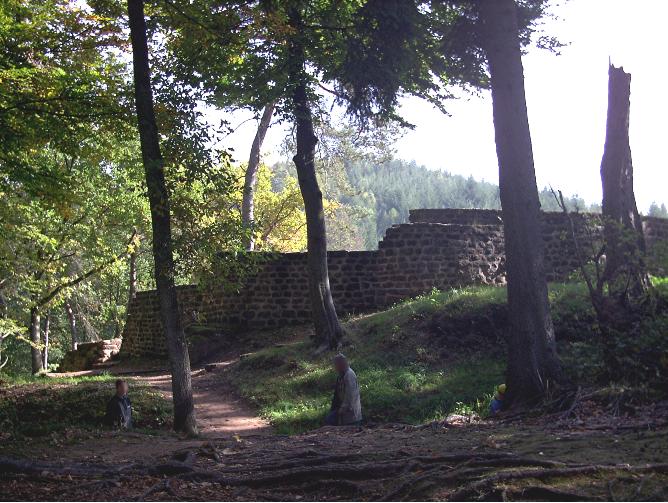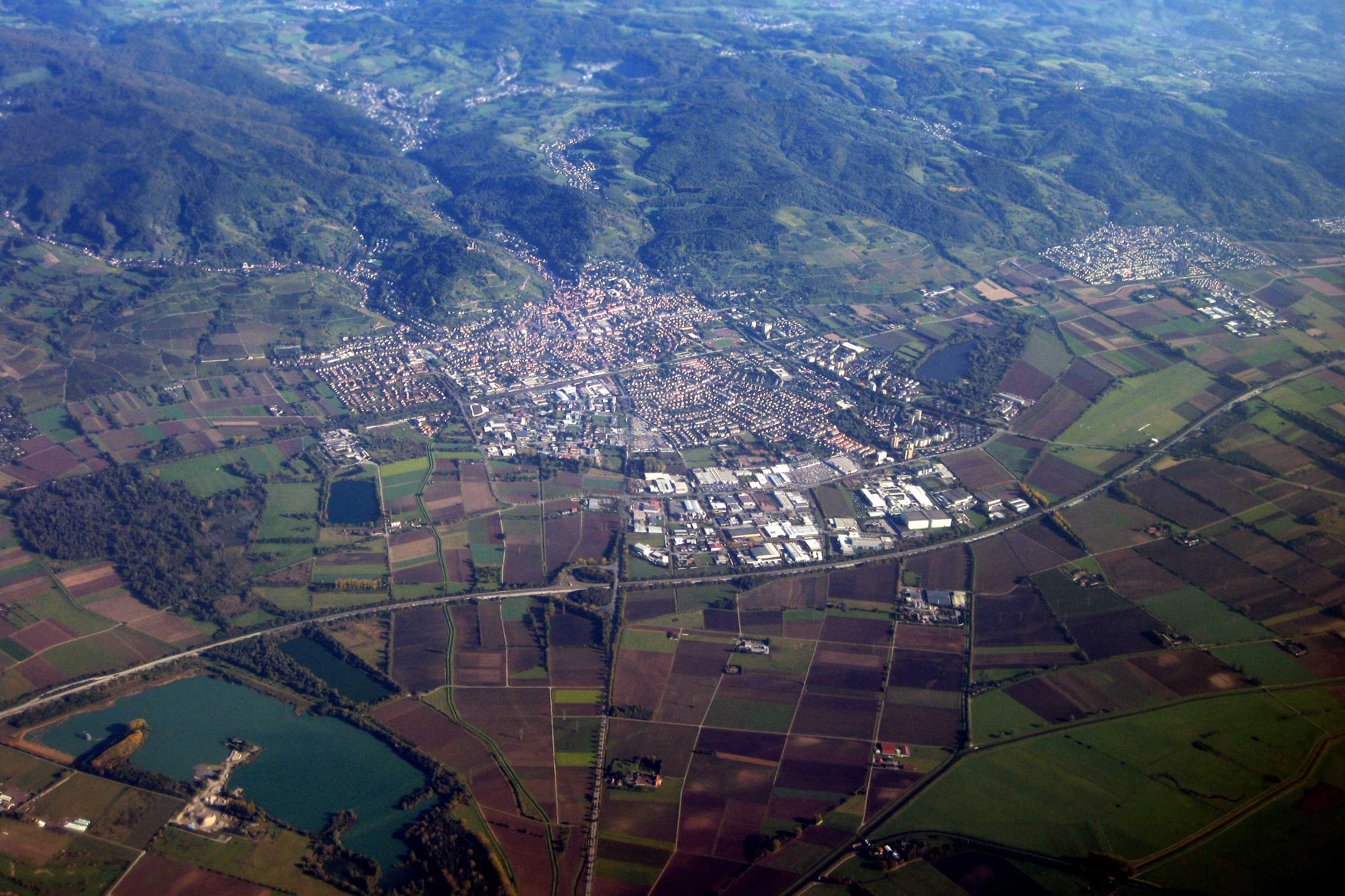|
Ludwig Becker (architect)
Ludwig Becker (19 November 185513 July 1940) was a Germans, German architect.Brigitte Hammerschmidt: Der Kirchenbau des 20. Jahrhunderts im rheinland-pfälzischen Teil des Bistums Trier. (Trier 2006) p.3−145. Life Becker was born the son of the eponymous Cologne master craftsman and master builder. He studied from 1873 at the Technical University of Aachen and was trained in addition to the stonemason and sculptor at the Cologne Dombauhütte. In Mainz he was named church master builder (''Kirchenbaumeister'') in 1884, and cathedral master builder (''Dombaumeister'') from 1909 to 1940. After 1909 he partnered with Anton Falkowski, and later with his son, the church architect Hugo Becker (1897–1967). Becker also worked as a construction researcher at the Mainz Cathedral, who brought important findings to light; however, his conclusions were flawed. His thesis was that the construction of the Mainz Cathedral was already begun in Constantine the Great's time in the 4th century, but ... [...More Info...] [...Related Items...] OR: [Wikipedia] [Google] [Baidu] |
Germans
Germans (, ) are the natives or inhabitants of Germany, or sometimes more broadly any people who are of German descent or native speakers of the German language. The Basic Law for the Federal Republic of Germany, constitution of Germany, implemented in 1949 following the end of World War II, defines a German as a German nationality law, German citizen. During the 19th and much of the 20th century, discussions on German identity were dominated by concepts of a common language, culture, descent, and history.. "German identity developed through a long historical process that led, in the late 19th and early 20th centuries, to the definition of the German nation as both a community of descent (Volksgemeinschaft) and shared culture and experience. Today, the German language is the primary though not exclusive criterion of German identity." Today, the German language is widely seen as the primary, though not exclusive, criterion of German identity. Estimates on the total number of Germ ... [...More Info...] [...Related Items...] OR: [Wikipedia] [Google] [Baidu] |
Kirrberg (Saar)
Kirrberg (in dialect ''Kerrbrich'') is a district of Homburg, situated in the eastern part of the Saarpfalz (Saar-Palatinate) district and the Saarland bordering state Rhineland-Palatinate. Until End 1973 was Kirrberg an independent municipality in the former Homburg district. Homburg (5 km), Zweibrücken (7 km), Saarbrücken and Kaiserslautern (both 35 km) are the closest towns. As of 1 August 2021, 2,607 inhabitants live in Kirrberg. The river Lambsbach runs through the district from east to west. History The chapel of Kirrberg was first mentioned in the year 1290 as ''"Capella in Kirchperch"''. On 23 April 1949 Kirrberg was affiliated with the Bundesland Saarland Saarland (, ; ) is a state of Germany in the southwest of the country. With an area of and population of 990,509 in 2018, it is the smallest German state in area apart from the city-states of Berlin, Bremen, and Hamburg, and the smallest in ... and because of that it is the youngest village ... [...More Info...] [...Related Items...] OR: [Wikipedia] [Google] [Baidu] |
Nonnweiler
Nonnweiler () is a municipality in the district of Sankt Wendel, in Saarland, Germany. Overview It is situated approximately 20 km northwest of Sankt Wendel, and 30 km southeast of Trier. The village is well known for the " Hillfort of Otzenhausen", a huge wall (former castle) of Celt The Celts ( , see Names of the Celts#Pronunciation, pronunciation for different usages) or Celtic peoples ( ) were a collection of Indo-European languages, Indo-European peoples. "The Celts, an ancient Indo-European people, reached the apoge ...ic origin. References External links * Municipalities in Saarland Sankt Wendel (district) {{Saarland-geo-stub ... [...More Info...] [...Related Items...] OR: [Wikipedia] [Google] [Baidu] |
Altenhundem
Lennestadt (occasionally also ''die Lennestadt'') lies in the Sauerland in southeast North Rhine-Westphalia and is a community in Olpe district. It is the district's most populous municipality. Lennestadt itself is not an actual town but a community which comprises several towns and villages. Geography Lennestadt lies at the common point of the Ebbegebirge (in the west), Homert and Rothaargebirge (in the east) Nature Parks and is crossed by the river Lenne, a tributary to the Ruhr. Besides the Hundem, which empties into the Lenne in the outlying centre of Altenhundem, the Veischede also feeds this river. Lennestadt's position is 51° 03' to 51° 12' N, 7° 58' to 8° 15' E. The town's highest point is the Härdler (756 m), and its lowest is on the Lenne near Borghausen (239 m). Neighbouring communities Lennestadt borders in the north on the communities of Eslohe and Finnentrop, in the east on Schmallenberg and Bad Berleburg, in the south on ... [...More Info...] [...Related Items...] OR: [Wikipedia] [Google] [Baidu] |
Mettlach
Mettlach (; Moselle Franconian: Mettlich) is a municipality in the district Merzig-Wadern, in Saarland, Germany, situated on the river Saar, approximately northwest of Merzig, and south of Trier. The headquarters of Villeroy & Boch are in Mettlach. Also, the Mettlach tiles are named after the municipality. Municipalities The population of the present city, including all outlying districts (as of 31 December 2015): Sights * Castle Montclair within the Saarschleife * Castle Saareck * Castle Ziegelberg * Chapel of St. Joseph * Cloef-Atrium (conference and visitor center) in Orscholz * Cultural-historical exhibition in the adventure center of Villeroy & Boch * Old abbey * Old tower * Parish Church of St. Gangolf * Parish Church of St. Hubertus, with Gothic Revival Gothic Revival (also referred to as Victorian Gothic or neo-Gothic) is an Architectural style, architectural movement that after a gradual build-up beginning in the second half of the 17th century became a w ... [...More Info...] [...Related Items...] OR: [Wikipedia] [Google] [Baidu] |
Bad Sobernheim
Bad Sobernheim () is a town in the Bad Kreuznach district in Rhineland-Palatinate, Germany. It belongs to the like-named ''Verbandsgemeinde'', and is also its seat. It is a state-recognized spa town, and is well known for two fossil discovery sites and for the naturopath Emanuel Felke. Bad Sobernheim is also a winegrowing town. History In the New Stone Age (roughly 3000 to 1800 BC) and during the time of the Hunsrück-Eifel Culture (600 to 100 BC), the Bad Sobernheim area was settled, as it likewise was later in Roman times. Beginning about AD 450, the Franks set up a new settlement here. However, only in 1074 was this "villa" (that is, village) of ''Suberenheim'' first mentioned in a document, one made out to Ravengiersburg Abbey. The Sobernheim dwellers then were farmers (some of whom were townsmen) and craftsmen, and into modern times they earned their livelihoods mainly at agriculture, forestry and winegrowing. Businesses and trades existed, but they were often ... [...More Info...] [...Related Items...] OR: [Wikipedia] [Google] [Baidu] |
Heppenheim
Heppenheim (Bergstraße) () is the seat of Bergstraße district in Hesse, Germany, lying on the Bergstraße on the edge of the Odenwald. It is best known for being the birthplace of Sebastian Vettel, a four-time Formula One World Champion and the place of founding of the Free Democratic Party (Germany). Geography Location The town is set on the vineyards below the mediaeval Starkenburg (castle). Defining for the townscape, besides the castle, is ''St. Peter'', the “Cathedral of the Bergstraße” as the big Catholic church is known locally; it was consecrated on 1 August 1904, and is not a bishop's seat. Heppenheim lies centrally on ''Bundesstraßen'' 3 and 460, and Autobahn A 5/ A 67, almost halfway between Heidelberg and Darmstadt, in southern Hesse on the boundary with Baden-Württemberg, and is Hesse's southernmost district seat. The town's official designation is “Heppenheim an der Bergstraße”. In the local Hessian German dialect, the town is al ... [...More Info...] [...Related Items...] OR: [Wikipedia] [Google] [Baidu] |
Kaiserslautern
Kaiserslautern (; ) is a town in southwest Germany, located in the state of Rhineland-Palatinate at the edge of the Palatinate Forest. The historic centre dates to the 9th century. It is from Paris, from Frankfurt am Main, 666 kilometers (414 miles) from Berlin, and from Luxembourg. Kaiserslautern is home to about 100,000 people. Additionally, approximately 45,000 NATO military personnel are based in the city and its surrounding district ('' Landkreis Kaiserslautern''). History and demographics Prehistoric settlement in the area of what is now Kaiserslautern has been traced to at least 800 BC. Some 2,500-year-old Celtic tombs were uncovered at Miesau, a town about west of Kaiserslautern. The recovered relics are now in the Museum for Palatinate History at Speyer. Medieval period Kaiserslautern received its name from the favourite hunting retreat of Holy Roman Emperor Frederick Barbarossa who ruled the Holy Roman Empire from 1155 until 1190. The small river Lauter made t ... [...More Info...] [...Related Items...] OR: [Wikipedia] [Google] [Baidu] |
Bad Kreuznach
Bad Kreuznach () is a town in the Bad Kreuznach (district), Bad Kreuznach district in Rhineland-Palatinate, Germany. It is a spa town, known for its medieval bridge dating from around 1300, the Alte Nahebrücke (Bad Kreuznach), Alte Nahebrücke, which is one of the few remaining bridges in the world with buildings on it.Brückenhäuser, Alte Nahebrücke, Neustadt , Bad Kreuznach o www.romantic-germany.info (in English). Retrieved 14 June 2018 The town is located in the Nahe (wine region), Nahe River wine region, renowned both nationally and internationally for its wines, especially f ... [...More Info...] [...Related Items...] OR: [Wikipedia] [Google] [Baidu] |
Düsseldorf
Düsseldorf is the capital city of North Rhine-Westphalia, the most populous state of Germany. It is the second-largest city in the state after Cologne and the List of cities in Germany with more than 100,000 inhabitants, seventh-largest city in Germany, with a 2022 population of 629,047. The Düssel, from which the city and the borough of Düsseltal take their name, divides into four separate branches within the city, each with its own mouth into the Rhine (Lower Rhine). Most of Düsseldorf lies on the right bank of the Rhine, and the city has grown together with Neuss, Ratingen, Meerbusch, Erkrath and Monheim am Rhein. Düsseldorf is the central city of the metropolitan region Rhine-Ruhr, the List of EU metropolitan regions by GDP#2021 ranking of top four German metropolitan regions, second biggest metropolitan region by GDP in the European Union, that stretches from Bonn via Cologne and Düsseldorf to the Ruhr (from Duisburg via Essen to Dortmund). The ''-dorf'' suffix mea ... [...More Info...] [...Related Items...] OR: [Wikipedia] [Google] [Baidu] |
Zornheim
Zornheim is an ''Ortsgemeinde'' – a Municipalities of Germany, municipality belonging to a ''Verbandsgemeinde'', a kind of collective municipality – in the Mainz-Bingen district in Rhineland-Palatinate, Germany. Geography Location Zornheim borders in the southwest on Ebersheim, an outlying centre of the States of Germany, state capital of Mainz on the edge of the Frankfurt Rhine Main Region. The municipality lies in Rhenish Hesse and is a winegrowing centre in the Rheinhessen wine region. Many wineries have been growing and making wine here for centuries. In 1973, in the course of administrative reform, Zornheim became part of the Nieder-Olm (Verbandsgemeinde), ''Verbandsgemeinde'' of Nieder-Olm, whose seat is in the Nieder-Olm, like-named town. History In 771, Zornheim had its first documentary mention. Zornheim's founding, however, reaches far back into early history, as witnessed by finds from the New Stone Age, the Bronze Age, the Iron Age and Ancient Rome, Roman t ... [...More Info...] [...Related Items...] OR: [Wikipedia] [Google] [Baidu] |







